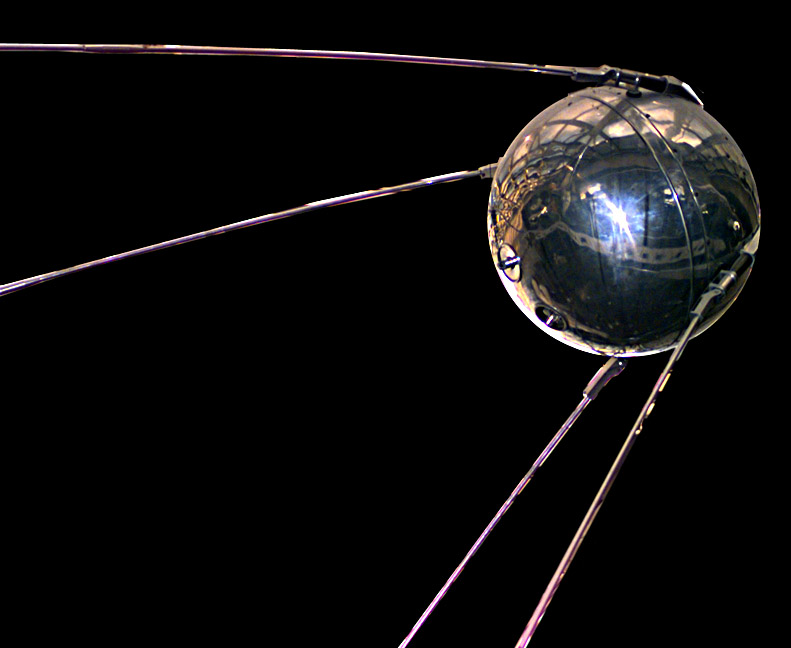
image from NASA NSSDC
It’s not the Moon, but the little moon that changed history. Fifty years ago today the Space Age began when the Soviet Union shocked the world by launching a nearly two-foot diameter sphere into orbit around the Earth. I was a high school sophomore, already interested in astronomy and caught up in the science fiction and science fact dream of space. I saw the bright (1st magnitude) arc of it passing in the sky, and heard recordings on the radio of its beep, beep, beep. There had never before been a human-made light so high in the sky, and while frightening because it came from Russia (in the US we were constantly blasted by cold war fear-mongering about evil Communists), it was tremendously exciting because the world of our dreams was becoming real. The loss of confidence in the US Government probably began with Sputnik. Why were we not first? Why did our rockets blow up on their launch pads? And as we learned much later, why had von Braun been forced, in a Redstone missile test of 1956, to fill the top stage with sand rather than fuel, specifically to keep it from going into orbit? Those were dark days - I remember hunching under my school desk in drills for nuclear war - but finally, after repeated failures of its predecessors, Ranger 7 worked brilliantly, giving the US a lead in the race to the Moon that was never challenged. I was an eager observer of the most exciting time in history - when humans first sent metal, dogs and finally ourselves into space. But despite many wondrous successes and discoveries, we - and the rest of the world - abandoned the dream of becoming a space-faring civilization. Until now. Today, Selene goes into orbit around the Moon. It is the most comprehensive scientific mission to the Moon, perhaps ever (Apollo had more important results because of sample return, but less capable instruments). What is hopeful is that Selene was launched by Japan, following Europe’s SMART-1 in 2005, and before lunar orbiters from China, India and the USA. Five nation groups are making important steps into deep space, with the ultimate goal of starting human expansion into the cosmos. This is a grand vision - as good as when we hoped for it 50 years ago, and now we have a second chance to make it real.
Related Links
Roger Launius’ America’s side of the Sputnik story - good reading!
James Harford’s Russian side of the Sputnik story - more good reading!
Yesterday's LPOD: The Face of the Universe
Tomorrow's LPOD: The Case of the Missing Rim
COMMENTS?
Register, Log in, and join in the comments.



